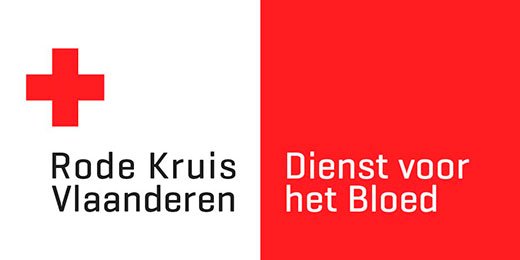Granulocytes from apheresis, irradiated
This product data sheet describes a patient-specific blood product that is only prepared to order in the context of specific indications. It is intended for a specific patient and is requested through a separate ordering procedure with the order form for patient-specific blood products.
Product Codes
Code 'Blood Service'
E3678V00
NIHDI Code
Hospitalized: 752 404
Non-hospitalized: 752 393
Preparation and composition
This product consists mainly of granulocytes resuspended in plasma. These cells were taken by apheresis. The donor is conditioned with steroids and growth factors before collection. Before administration, the product is irradiated with a dose between 25 and 50 Gray. The product looks red as a result of significant red blood cell admixture. The product contains at least 1 x1010 granulocytes.
Indications
Severe therapy-resistant bacterial infections, yeast or fungal infections in patients with agranulocytosis or non-functional granulocytes.
Dose and instructions for use
Dose
One granulocyte concentrate per day.
Special precautions
Granulocyte concentrates are administered ABO compatible. The product should be tested for compatibility by major cross-matching with serum from the recipient. Minor incompatibility is acceptable with a low titer of the antibody(s) in question.
Resus D-negative female recipients younger than 50 years of age are preferably treated with granulocytes from resus D-negative donors. If granulocytes from rhesus D-positive donors are nevertheless used for these patients, rhesus D immunization should be prevented by administration of anti-resus D immunoglobulins.
User Manual
Granulocytes are administered intravenously through a perfusion set with standard filter (170-260 µ). Granulocytes are transfused slowly for the first 10 to 15 minutes while the patient is closely observed for any transfusion reaction. Then the infusion rate is increased as a function of clinical condition. An aseptic technique must be used during administration.
Any residues are disposed of as medical waste.
Possible undesirable effects when the product is administered
The most frequent side effects of blood product transfusion are chills, fever and symptoms of an allergic nature such as urticaria and itching.
Serious, potentially fatal, adverse reactions include circulatory overfilling with pulmonary edema, transfusion-related acute lung disease (TRALI), bacterial sepsis, post-transfusion purpura, hemolytic transfusion reaction and severe allergic reactions such as anaphylactic shock.
Further occurrences may include: posttransfusion purpura, citrate toxicity and HES stacking in long-term treated patients.
Through blood and blood derivatives, infections can be transmitted: with viruses (B19 parvovirus, HAV, HBV, HCV, HIV...), with bacteria (syphilis), with protozoa (malaria, leishmaniasis, trypanosomiasis) and with unknown pathogenic agents.
The chance of CMV and EBV being transmitted from the donor to the patient is not negligible. HLA-specific antibodies and antibodies to red blood cell antigens can be formed.
If an acute transfusion reaction occurs, transfusion should be stopped immediately and appropriate symptomatic therapy initiated.
In case of a mild allergic transfusion reaction (itching, redness, urticaria), the transfusion can be continued if necessary after administration of antihistamines or corticosteroids.
Medication and other interactions
A granulocyte concentrate should not be mixed with drugs or infusion solutions.
Preservation and stability
A granulocyte concentrate should be stored at a temperature between 20 °C and 24 °C, without shaking. The storage time is a maximum of 24 hours. A granulocyte concentrate should not be used after the expiration date and with signs of damage or decay.
Safety of products prepared from human whole blood
Blood is drawn from voluntary, non-remunerated donors, selected according to the standards established by Belgian legislation and the procedures of the Blood Service, of Belgian Red Cross-Flanders.
With each donation, the donor is inspected by a physician and tested for antibodies against the human immunodeficiency viruses (anti-HIV-1 and HIV-2), for antibodies against the hepatitis C virus (anti-HCV), for the hepatitis B virus surface antigen (HBsAg) and for antibodies against Treponema pallidum. HIV, HBV and HCV are also detected by NAT testing.
Products from donations with positive test results are destroyed.
When products prepared from human blood are administered, transmission of an infectious agent cannot be completely excluded. The residual risk of transmission of HIV, HBV or HCV by transfusion of 1 unit is estimated at 1 in 4 to 6 x106, 1 in 0.3 to 1 x106 and 1 in 700,000, respectively.
Transmission of as yet unknown pathogens cannot be ruled out.
Episode
By medical prescription, after order.
Last updated 11/04/24.
